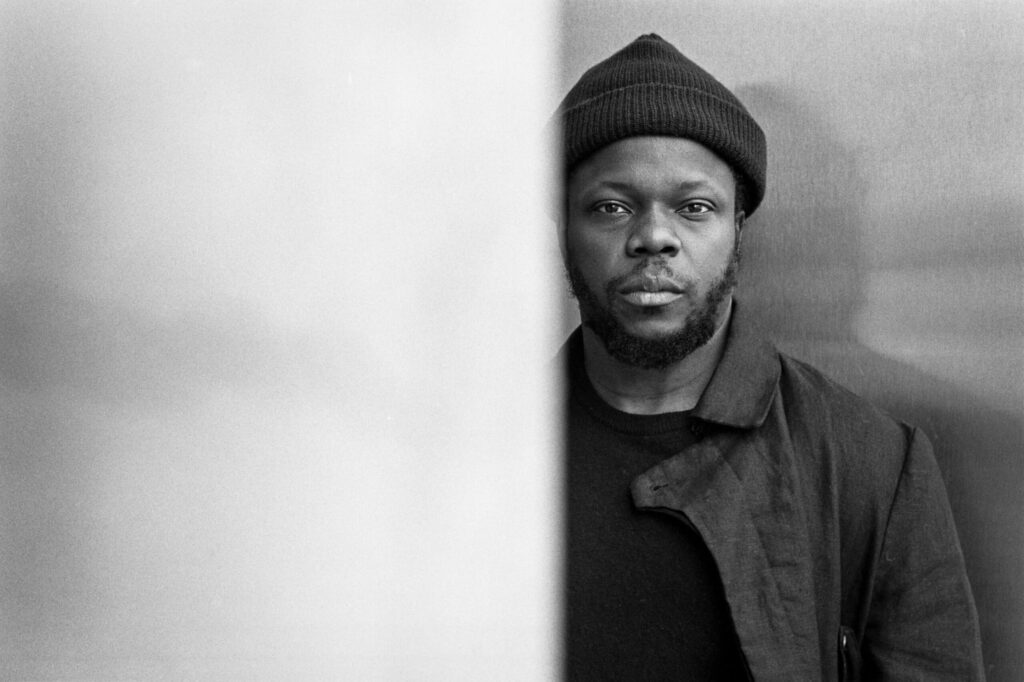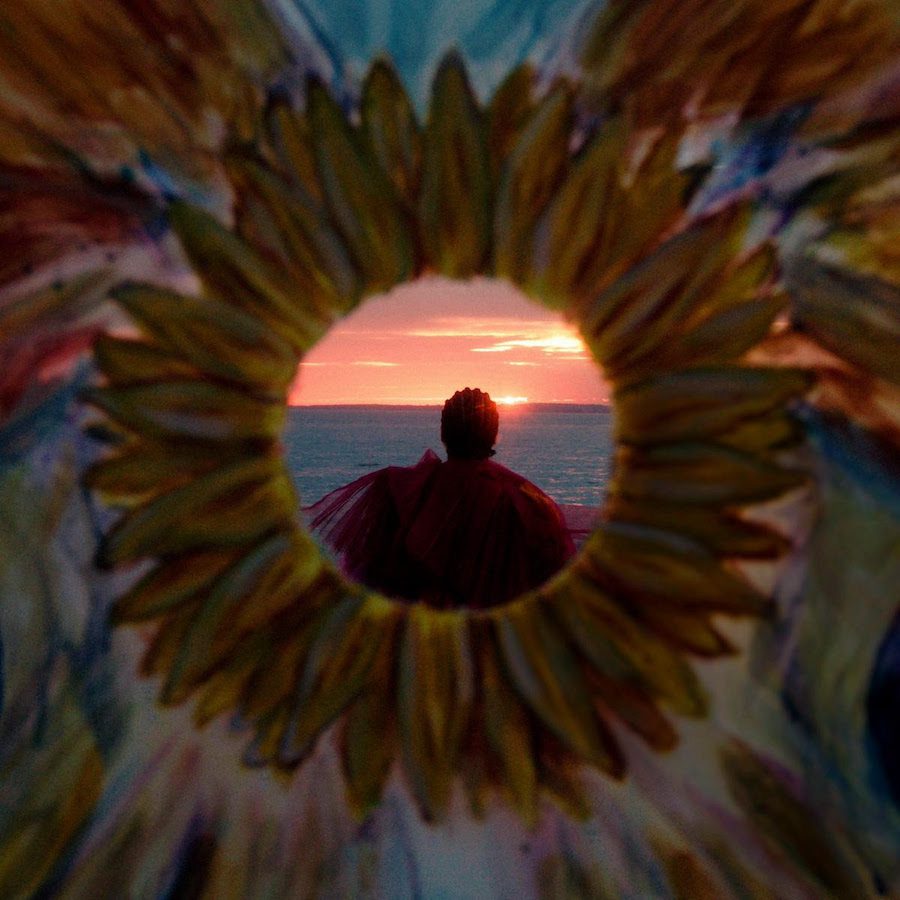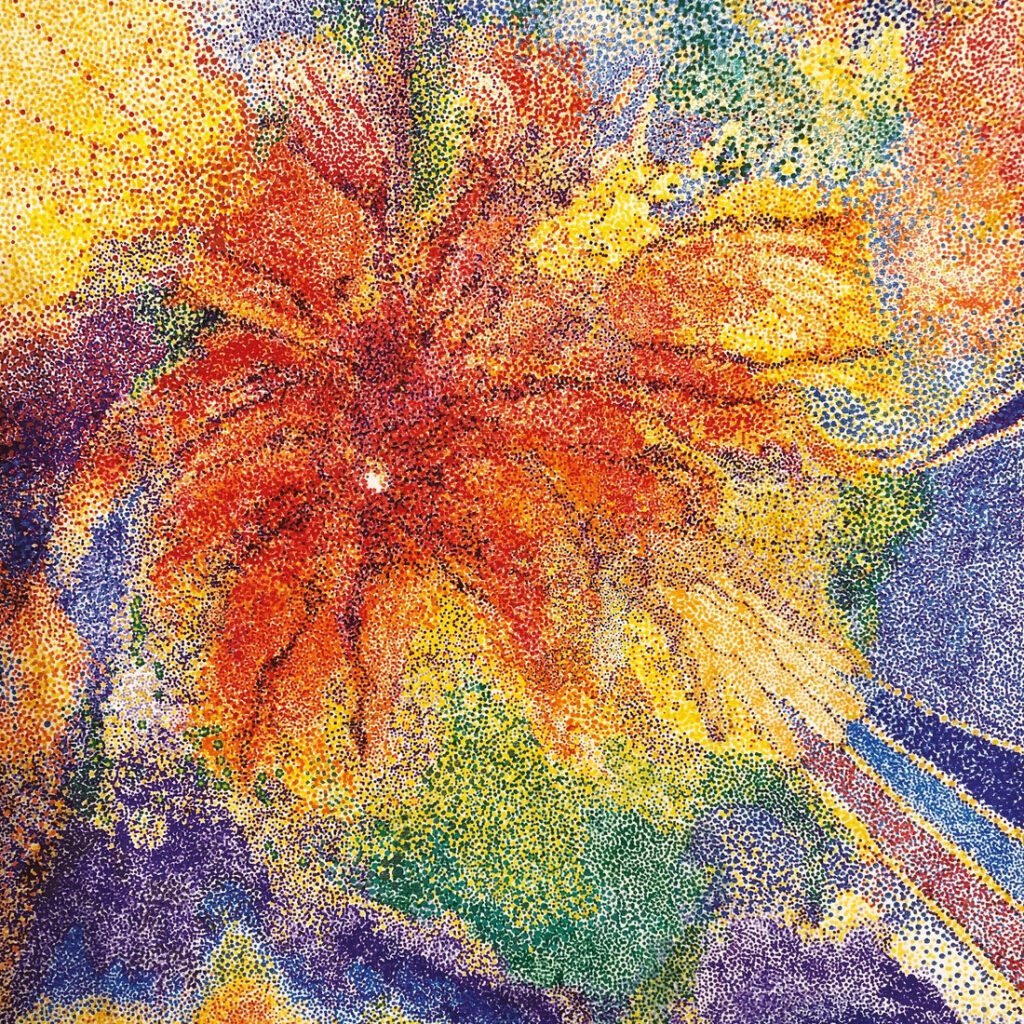
Did you listen to André 3000’s 90-minute collection of semi-ambient flute jams, New Blue Sun? I did, and I… didn’t hate it! I mean, he stacked the deck by featuring some of the most interesting players in LA on it, including percussionist/multi-instrumentalist Carlos Niño, keyboardist Surya Botofasina, and others. (Niño has just released an album with South African keyboardist/singer Thandi Ntuli that’s discussed below, and he put out his own album, (I’m Just) Chillin’, On Fire, back in September — André 3000 is one of many guests on that record.) But the music on New Blue Sun is surprisingly blissful, if somewhat meandering, and I think the album could have a real half-life beyond the initial social media explosion if Sony mails a copy to every acupuncturist in the US for in-office play.
It seems like Mr. 3000 (who I saw looking at CDs at the Aum Fidelity label’s merch table at the annual NYC free jazz gathering the Vision Festival back in 2017) has gotten on board with a recent vibe in the Black bohemian/arts community. New Age music and ultra-chill spiritual jazz have been having a moment for a few years now, for a variety of reasons including *looks out window, makes sweeping arm gesture*, and he’s not the only one to pick up the flute, in particular. Shabaka Hutchings put out an eight-track EP of ambient flute-and-synth-and-wind-chimes music, Afrikan Culture, in 2022, and recently gave an interview talking about his decision to give up the saxophone (and with it all of his groups: Sons Of Kemet, The Comet Is Coming, and Shabaka And The Ancestors) and focus on the flute. It was an interesting piece — he talked about the difference in the way a flute is played, with pure wind, versus the way reed instruments are played, using the teeth and vibrational force, and how that changes the dynamics of the music and the effect on the player. Unfortunately, the website that posted it has taken it down; I don’t know why.
Anyhow, for those of you who are new to the flute/spiritual jazz/New Age zone, welcome! Some of us have been spending our Sundays astral traveling from the couch, as gentle flutes and soft synths fill the room with rainbow haze, for many years. So consider the artists that follow to be your guides on the path to bliss and enlightenment, with some funk and soul and even classical music thrown in.
Yusef Lateef is a hugely important, yet under-recognized, figure in jazz history. I think his discography is just too wide and diverse for people to really get a grip on it, and he wasn’t enough of a weirdo to develop a cult like Sun Ra. His music combines hard bop, gospel, and blues with instruments and compositional strategies from around the world, particularly the Middle East and North Africa. He wasn’t the only one trying this out in the 1950s; bassist Ahmed Abdul-Malik made a string of albums between 1958 and 1963 that offer some compelling experiments, and pianist Randy Weston did more than anyone to bridge the gap between American jazz and traditional African music. But Lateef’s work, especially on albums like 1957’s Prayer To The East and Jazz And The Sounds Of Nature and 1961’s Eastern Sounds, made it clear that the flute could be used as a path to meditation and introspection, while keeping things songful and swinging. On “The Plum Blossom,” from Eastern Sounds, he plays the xun, an avocado-shaped clay flute from China that’s been played in that country for over seven thousand years. Lateef’s concept of “world music” fused with jazz evolved over the years to incorporate funk and soul, and like Sun Ra, he embraced electronics as well, granting his work an extra, futuristic dimension. In 1987, he recorded a solo album, Yusef Lateef’s Little Symphony, on which he overdubbed multiple flutes and saxophones, synths, sitar, and percussion. As its title suggests, it’s a single four-movement work running about 35 minutes and creating a blissful atmosphere throughout. It actually won a Grammy for Best New Age album in 1988.
Bobbi Humphrey, a flutist from Texas, studied classical music and jazz in high school and was encouraged to come to New York by trumpeter Dizzy Gillespie after he saw her perform in a talent show at Southern Methodist University. She signed with Blue Note Records in 1971 — the first female instrumentalist on their roster since pianist Jutta Hipp in the 1950s — and appeared on trumpeter Lee Morgan’s final album. He returned the favor by playing on her label debut, Flute In. That album and the follow-up, Dig This, were slick and somewhat smooth jazz-funk, and included covers of songs by Stevie Wonder, Bill Withers, the Temptations and Carole King. Her third album, 1973’s Blacks And Blues, was even slicker, and it was her commercial breakthrough. It was written and produced by Larry Mizell, who’d just worked with trumpeter Donald Byrd on his albums Ethiopian Knights and Black Byrd. Like those Byrd releases, it was a hit, and has had a long afterlife in hip-hop: whosampled.com says Madlib, Freddie Gibbs, Ice-T, DJ Jazzy Jeff & The Fresh Prince, Digable Planets, and many others have borrowed from Humphrey’s gentle, soulful tracks.
Hubert Laws was also from Texas, and also blended jazz, classical, and pop into a sound all his own. After coming to New York to study at Juilliard, he played with the New York Metropolitan Opera Orchestra and the New York Philharmonic Orchestra, making three albums for Atlantic as well. In 1969, he released Crying Song on the CTI label, which was an artistic breakthrough for him and for fusion: It included versions of songs by the Beatles, the Monkees, Traffic, the Bee Gees, and even two Pink Floyd compositions (the title track and “Cymbaline”) from More. The follow-up, 1970’s Afro-Classic, is even more adventurous and beautiful. Backed by Bob James on electric piano, Gene Bertoncini on guitar, Ron Carter on bass, Freddie Waits on drums, and Dave Friedman on vibraphone, as well as a percussionist and a bassoon player, Laws interprets James Taylor’s “Fire And Rain” (on which Friedman plays his vibes through a fuzz pedal, to stunning psychedelic effect) and then tackles a Mozart flute sonata, a section of Bach’s Brandenburg Concerto No. 3, and the theme from the movie Love Story, all in gentle, dreamlike fashion. But it’s his 15-minute version of Bach’s Passacaglia in C Minor that’s the heart of the album, and it’s truly incredible. The band swings through the piece, re-arranged for jazz instrumentation and subject to rock production techniques (Ron Carter takes an electric cello solo, and Laws runs his flute through a pedal, too), turning it into something that sounds as much like Pink Floyd’s “Echoes” as classical music.
Chicago-based flutist Nicole Mitchell is one of the most adventurous and forward-looking composers and performers around, a genuine visionary whose muse takes her in all sorts of directions all the time. She’s been making music with her various Black Earth groups for over 20 years, and on releases like 2008’s Xenogenesis Suite: A Tribute To Octavia Butler and 2017’s Mandorla Awakening II – Emerging Worlds, has combined instruments from around the world with avant-garde composition and vocalizations, electronics, and sophisticated production techniques to create an unprecedented music that points to the past and the future at once. Offering, a live collaboration with Moor Mother from 2020, is atmospheric and dark, almost suffocating in its intensity at times but also beautiful and emotionally resonant. That same year, she put out Earthseed, a collaboration with poet/singer-songwriter Lisa E. Harris that felt like an avant-garde theater piece. But her 2022 album Medusae might be of the most interest to folks looking for something New Blue Sun-ish; it’s a collaboration with Italian electronic musician Fabio Paolizzo and his Video Interactive VST Orchestra (VIVO) computer system, which reacts to musical input in real time, creating cybernetic responses to Mitchell’s flute improvisations.
There’s a whole world of this kind of inner-spaceways-traveling music out there, some of which keeps one toe (or more) under the jazz umbrella, and some of which is much more avant-garde and obscure than that. May these recommendations be the start of a long and rewarding journey.



